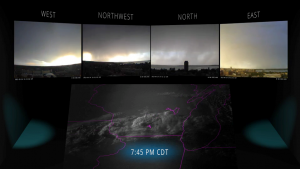Hurricane season runs from June 1 through Nov. 30. The National Oceanic and Atmospheric Administration has been making seasonal forecasts for about the last decade. Their Atlantic Hurricane Season Outlook for this year indicates there is a 70 percent likelihood of having 13 to 20 named storms, of which seven to 11 could become hurricanes, including three to six major hurricanes.
If a tropical storm has wind speeds that are 39 mph or higher, the storm gets a name. It becomes a hurricane if it has winds of 74 mph or higher, and a major hurricane if it has winds of 111 mph or up.
In an average season, the Atlantic Ocean sees 12 named storms, six hurricanes and three major hurricanes. So, if the forecast holds up, we are in for an active hurricane season.
The forecast is based on current and expected conditions. First, an active season would be predicted if the sea surface temperatures are warmer than normal. Warmer temperatures increase evaporation off the sea surface, and that provides the energy for the storm. The forecast is also a function of the El Niño conditions in the Pacific Ocean.
On average, El Niño years are low-hurricane years as during such years a strong jet stream exists over the subtropics. That can destroy the carefully organized circulation of hurricanes.
Perhaps surprisingly, the atmospheric pressure pattern over the Arctic also plays a role in the forecast: High pressure means a weaker jet stream, which favors hurricane development.



